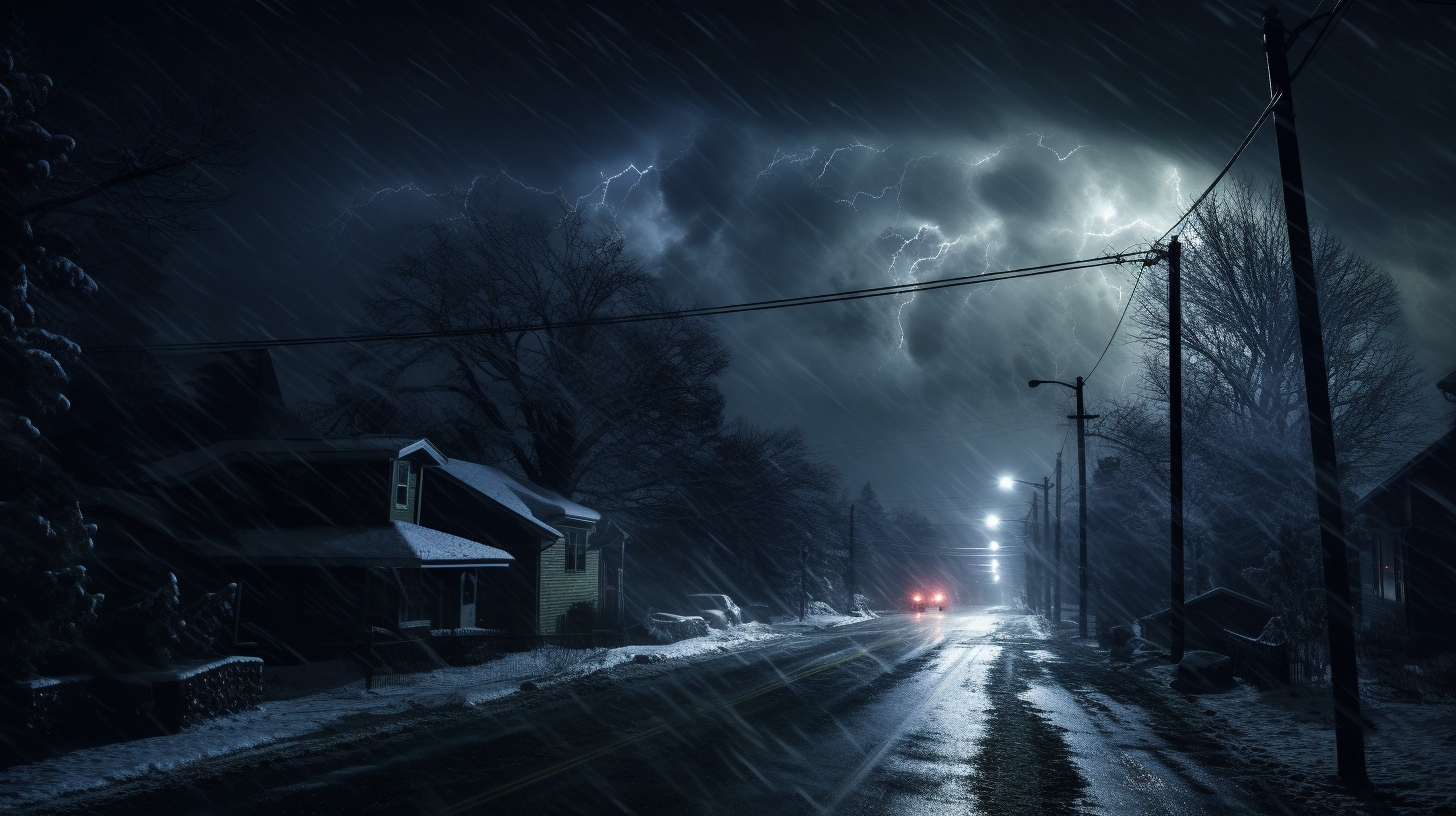Imagine a world where the gentle dusting of snow is a relic of folklore, where the whispers of winter are but a hushed secret passed down through generations. This is the unforgiving tableau onto which nature’s icy tantrums etch a new narrative: Haunting Hailstorms – Frozen Fury in a Warm World.
In this volatile climate cauldron, hail does not only come; it invades. And what is left in its wake? Not glistening carpets awaiting the playful dance of children’s boots but shattered windows, bruised crops, and a chilling reminder of our fragile coexistence with the environment. We dive into the paradox of the world’s warm embrace concurrent with the cold-hearted assault by hail.
The reports are as frequent as they are devastating – a countryside littered with splintered greenery, urban landscapes dented by the wrath of ice. These hailstorms wield stones the size of golf balls, sometimes baseballs, which plummet from the heavens with a ferocity that mocks our meager earthly constructions. Researchers aimlessly beckon towards historical data, only to find that this level of aggression from the skies is unprecedented. The crescendo of falling ice is a dirge for the silent snowfalls of yore; a torturous iron hail in this warm world.
Travel back in time, and you’d find hail as a mere summer’s nuisance. Today, it is the herald of a climatic anomaly, thrusted upon us by the sins of our environmental apathy. Hail is no longer just a natural phenomenon; it is an augury. It compels us to question—if not lament—the absence of soft snow in a world that our forebears knew, one where the silent winter offered a blanket of serene respite.
In the earlier published article, “When Snowfalls Are But Ancient Memory,” we encountered the poignant evanescence of snow. Our current hail-laden plight is, therefore, not merely a shift in precipitation, but a poetic injustice of climate rebuke. It is as if the skies cry out, pining for the frozen tundra and icy caps that once graced our poles, now replaced by torrents of ice echoing through time and space.
As we navigate this tale of dystopian despair, we must ask ourselves—how did we arrive at this haunting juncture? Every hailstorm emerges from a backdrop where greenhouse gasses pillage our atmosphere, where our oceans turn acidic in life’s silent scream, and the meadows buckle under the fierce gaze of an ever-warming sun.
Society watches, helpless, as the farmers’ plight deepens with each hailstorm. Their teetering fortunes, a testament to the mercurial skies, hinge on technology that promises protection but is invariably outmatched. Insurance claims skyrocket as the hail pummels its rhythm upon resource-strapped communities, laying waste to the hope of a fruitful harvest.
In the absence of the soft winter snow’s insulating quilt, vegetation finds itself exposed to the deepening chill of climate indifference, magnified by hail’s brutality. Folklore paints images of winters past, where children anticipated the first snow with bated breath. Now, the collective breath is held in dread, longing for a reprieve that never comes.
The juxtaposition is startling—a world that warms but hails ice. It’s a grim dance of extremes, where each step forward in summer’s heat seemingly prompts a frosty retribution from above. Regrettably, our lamentations for what once was must now be accompanied by strategies to cope with what is.
“Endure and adapt” becomes the mantra as communities rally, erecting defenses against hailstorms with innovation bred from necessity. From anti-hail nets to weather modification practices, humanity gropes for solutions within the limitations of a climate-ravaged Earth that offers no leniency to its inhabitants.
Climate change is the specter that looms large over this tale of frozen fury, a ceaseless shadow casting long, dark lines upon our faltering hopes. Hailstorms are but a symptom, yet they roar with the voice of our planet, jolted to wrath by our continuous disregard for the balance of nature.
In closing, we circle back to the strange, haunting spectacle: hailstorms that stir yet silence, that demand our attention with their frozen pellets of fury, raining down upon a world too warm for snow, but paradoxically ripe for ice. The stark imagery of these invasions from the sky shall remain emblazoned upon the canvas of our collective consciousness, an enduring portrait of nature’s rebellious cry in a world that increasingly forgets how to listen.
